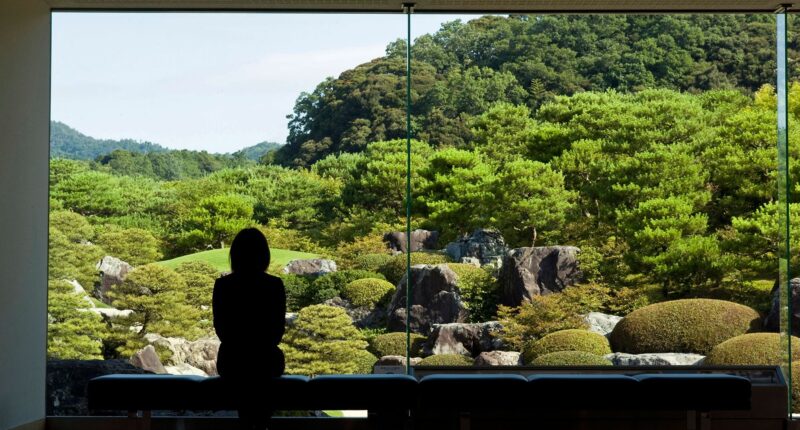In Japan, gardening isn’t merely a pastime; it’s a revered art steeped in spiritual significance.
While social media reverberates with admiration for various gardens across Japan, one stands quietly secluded—the Adachi Museum of Art’s garden in the tranquil Shimane prefecture, a three-hour train journey from Osaka.
For over two decades, the US-based Sukiya Living magazine (formerly Journal of Japanese Gardening) has bestowed its highest accolade upon the Adachi Museum, hailing it as the most exquisite traditional garden. Despite this acclaim beyond Japan’s borders, the museum and its gardens bask in relative obscurity compared to Kyoto and Tokyo’s renowned counterparts.
Visitors, especially Westerners, often find themselves perplexed when strolling through a Japanese garden devoid of vibrant blooms. These gardens focus on elements like moss, trees, or meticulously arranged rocks instead. They capture a subtler essence, distinct from the grandeur of colorful flowers.
“Gardens in Japan aspire to high art in a way different from the West,” explains Sophie Walker, author of “The Japanese Garden.” “The concept of ‘Mitate’ allows the imagination to transcend reality. A rock, initially perceived at a human scale, transforms into a mountain. The garden’s power lies in the viewer’s interpretation.”
At the Adachi Museum, artworks by Japan’s contemporary artists adorn its walls. However, patrons often disregard the artwork, choosing instead to immerse themselves in the sprawling vistas outside the window.
These meticulously designed gardens—a pine grove, rock garden, and moss garden—aren’t pathways for strolling but masterpieces to behold. They emulate paintings crafted not from oil and pastels but from meticulously nurtured trees and plants.
The museum architecture is an ode to framing these gardens. Its vast picture windows are meticulously designed to accentuate the garden’s most striking features.
Takodori Adachi, the museum’s director and Zenko Adachi’s grandson, emphasizes that the gardens’ allure extends beyond their intrinsic beauty. “These gardens blend seamlessly with the surrounding mountains,” he says. Unlike the compact gardens in Kyoto, the museum exudes unity with the backdrop, creating a unique charm that cannot be replicated elsewhere.

The journey to the museum is an experience in itself. Shimane, along with Tottori, stands as Japan’s least populated prefectures, nestled in the serene San’in region.
The Adachi Museum’s location is pivotal to its charm. It is a sanctuary amidst Japan’s overtourism troubles, offering a respite from crowded attractions grappling with visitor-induced issues.
Unlike Japan’s high-speed Shinkansen trains, the museum’s route involves an express train from Osaka or Tokyo to Okayama, followed by a slower local train meandering across Honshu to Matsue, Shimane’s capital. A local commuter train from Matsue transports visitors to Yasugi town, where a free shuttle ferries them to the museum.
Ensuring a spot on the return shuttle is crucial due to limited seating, especially during peak travel seasons like summer and spring. The museum’s gift shops are an additional delight, showcasing local specialties like craft beer named after Lafcadio Hearn and mouthwatering soft-serve ice cream flavored with wild pears from the region.
In essence, the Adachi Museum is a hidden gem beckoning travelers seeking solace amidst Japan’s bustling tourist hotspots. As other iconic destinations grapple with overcrowding, the museum stands as an oasis, carefully curated to preserve its tranquil beauty.





